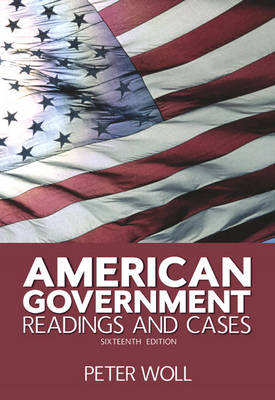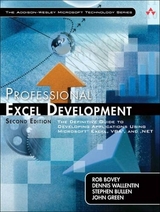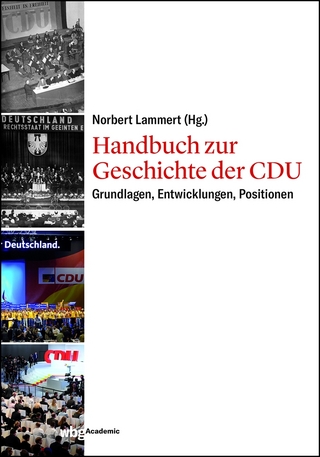
American Government
Longman Inc (Verlag)
978-0-321-32950-9 (ISBN)
- Titel erscheint in neuer Auflage
- Artikel merken
I. THE SETTING OF THE AMERICAN SYSTEM. 1. Constitutional Government. John Locke, Second Treatise, Of Civil Government. John P. Roche, The Founding Fathers: A Reform Caucus in Action. Charles A. Beard, Framing the Constitution. James Madison, Federalist 47, 48, 51. Laurence H. Tribe and Michael C. Dorf, How Not to Read the Constitution. 2. Federalism. Alexander Hamilton, Federalist 16, 17. The Anti-Federalist Papers No. 17. James Madison, Federalist 44. James Madison, Federalist 45. James Madison, Federalist 39. James Bryce, The Merits of the Federal System. McCulloch v. Maryland, 4 Wheaton316 (1819). Gibbons v. Ogden, 9 Wheaton1 (1824). Morton Grodzins, The Federal System. David Broder, A Republic Subverted. United Statesv. Morrison (2000). 3. Civil Liberties and Civil Rights. Antifederalist Paper No. 84 On the Lack of a Bill of Rights. James Madison, Before the House of Representatives in 1789 Proposing Amendments to Add a Bill of Rights to the Constitution Barron v. Mayor and the City Council of Baltimore 32 U.S. 243 (1833). Gideon v. Wainwright 372 U.S.335 (1963). Oliver Wendell Holmes, The Need to Maintain a Free Marketplace of Ideas. New YorkTimes Co. v. Sullivan 376 U.S 254 (1964). Plessy v. Ferguson163 U.S.537 (1896). Brown v. Board of Education of Topeka347 U.S.483 (1954). Brown v. Board of Education of Topeka349 U.S.294 (1955). Engel v. Vitale 370 U.S.421 (1962). Zelman v. Simmons-Harris Supreme Court of the United States(2002). Roe v. Wade 410 U.S.113 (1973). Adarand Constructors, Inc. v. Pena 515 U.S.200 (1995). II. POLITICAL PARTIES, ELECTORAL BEHAVIOR, AND INTEREST GROUPS. 4. Political Parties and the Electorate. James Madison, Federalist 10. E. E. Schattschneider, Party Government. California Democratic Party et al. V. Jones, Secretary of State of California, et al. Supreme Court of the United States (2000). Report of the Committee of Political Parties, American Political Science Association, Toward a More Responsible Two Party System. Martin P. Wattenberg, Perspectives on American Political Parties. David R. Mayhew, Divided We Govern. Bernard R. Berelson, Paul F. Lazarsfeld, and William N. McPhee, Democratic Practice and Democratic Theory. V.O. Key, Jr., A Theory of Critical Elections. Benjamin Ginsberg and Martin Schefter, Politics by Other Means. Bernard R. Berelson, Paul F. Lazarsfeld, and William N. McPhee, Democratic Practice and Democratic Theory. V.O. Key, Jr., The Responsible Electorate. Buckley V. Vaelo 263 424 U.S.(1976). McConnell v. Federal Election Commission, United States Supreme Court. Bradley A. Smith, Unfree Speech: The Future of Regulatory "Reform". Thomas E. Mann and Norman J. Ornstein, Myths and Realities about the Bipartisan Campaign Reform Act of 2002.. 5. Interest Groups. Jeffrey M. Berry, Madison's Dilemma. David B. Truman, The Governmental Process. John Kenneth Galbraith, The Theory of Countervailing Power. Theodore J. Lowi, The End of Liberalism: The Indictment. Mark J. Rozell and Clyde Wilcox, Interest Groups and the American Political System. Larry J. Sabato, The Misplaced Obsession with PACs. 6. The Presidency. Alexander Hamilton, Federalist 70. Clinton Rossiter, The Presidency-Focus of Leadership. Richard E. Neustadt, Presidential Power. Thomas E. Cronin and Michael A. Genovese, Presidential Paradoxes. James David Barber, The Presidential Character. Sidney M. Milkis, The Presidency and Political Parties. David Brooks, How to Run for President. Ex Parte Merryman (April, 1861). Ex Parte Milligan, 71 U.S.2 (1866). Tony Mauro, A Mixed Precedent for Military Tribunals. Ex Parte Quirin, 317 U.S. 1 (1942). Hamdi v. Rumsfeld, United States Supreme Court (2004). 7. The Bureaucracy. Peter Woll, Constitutional Democracy and Bureaucratic Power. James Q. Wilson, The Rise of the Bureaucratic State. 8. Congress. James Madison, Federalist 53, 56, 57, 58, 62, 63. Woodrow Wilson, Congressional Government (1885). Morris P. Fiorina, The Rise of the WashingtonEstablishment. Lawrence C. Dodd, Congress and the Quest for Power. Edmund Burke, Speech to the Electors of Bristol. Richard F. Fenno, Jr., If, As Ralph Nader Says, Congress Is "The Broken Branch," How Come We Love Our Congressmen So Much? Nelson W. Polsby, Congress-Bashing for Beginners. David R. Mayhew, Congress: The Electoral Connection. Richard F. Fenno, Jr., Home Style and WashingtonCareer. 9. The Judiciary. Alexander Hamilton, Federalist 78. Marbury v. Madison1 Cranch 137 (1803). John P. Roche, Judicial Self-Restraint. Elk Grove Unified School Districtv. Newdow (2004). William J. Brennan, Jr., How the Supreme Court Arrives at Decisions. Justice Sandra Day O'Connor, Constitutional Libertyand the Right to Abortion. Chief Justice William H. Rehnquist, Liberty, Privacy, and the Right to Abortion. Justice Antonin Scalia, Libertyand Abortion: A Strict Constructionist's View. Appendix 1: The Declaration of Independence. Appendix 2: The Constitution of the United States.
| Erscheint lt. Verlag | 17.8.2005 |
|---|---|
| Verlagsort | New Jersey |
| Sprache | englisch |
| Maße | 10 x 232 mm |
| Gewicht | 719 g |
| Themenwelt | Sozialwissenschaften ► Politik / Verwaltung |
| ISBN-10 | 0-321-32950-3 / 0321329503 |
| ISBN-13 | 978-0-321-32950-9 / 9780321329509 |
| Zustand | Neuware |
| Haben Sie eine Frage zum Produkt? |
aus dem Bereich



